Bermuda Photos: World Wetlands Day
Today [Feb 2] is World Wetlands Day which marks the anniversary of the signing of the Convention on Wetlands [the Ramsar Convention] forty years ago, recognizing the importance of wetlands worldwide and the need to protect them. In 1999, seven of Bermuda’s wetlands were designated as Ramsar Sites.
Minister of Public Works Derrick Burgess encouraged Bermuda residents to take a moment today to appreciate the Island’s unique wetlands saying: “The subtle diversity of species that live in our wetlands and the changing variety of life throughout the year make these open spaces valuable to humans for the enjoyment of nature and their tranquility. The Department of Conservation Services, in conjunction with the Department of Parks and the Department of Environmental Protection, supports active management and research in our wetlands.”
“Several ongoing research projects on the status of the killifish populations, intensive studies of the Island ecology of our diamondback terrapin and issues of declining water quality, as shown by mal-formed toads that breed in the some ponds, demonstrate the Bermuda Government’s ongoing commitment to the protection and restoration of wetlands for the enjoyment of all,” continued Minister Burgess.
Bermuda’s inland ponds are the most visible examples of wetlands on the Island and attract a great diversity of wading birds [coots, grebes, herons], including seasonal migrants, such as the kingfisher and many different ducks. They all arrive to use the food resources found within and around the ponds, such as small fishes, crabs, snails and insects.
Our largest ponds have good access with trails at Spittal Pond, Warwick Pond and Lover’s Lake. The ponds are critical habitats for our two endemic killishes, Fundulus bermudae and Fundulus relictus, and their overall health is essential for the survival of these species. Recently, several killifish have been sent to the Vienna Zoo to develop expertise with breeding them in captivity. Our native diamondback terrapin is also a pond dweller that is found only in Mangrove Lake and Trott’s Pond.
In some locations, our ponds are surrounded by or border extensive marshes, such as Devonshire Marsh and Pembroke Marsh. Paget Marsh’s boardwalk is thanks to the late chairman of Bermuda National Trust, Mr. Dennis Sherwin. These marshes contain some of our only examples of primeval forests, with relatively few invasive plants. Marshes are distinguished by the distinctive plants that tolerate the wet conditions, including many native ferns, grasses, bulrushes and cattails. Elevated areas within the marsh support our endemic cedar and palmetto forests but are threatened by invasive plants such as the Brazil pepper.
Two other important types of wetland are mangroves and salt marshes. Mangroves are typically coastal wetlands, such as at Hungry Bay and Foot of the Lane. Mangroves are very important habitats for marine species: the exposed muddy bottom is home to the rare Giant Land Crab and the common mangrove crab, while the coffee bean snails and attached invertebrates (sponges, clams) inhabit the red mangrove prop roots.
Mangroves are important feeding areas for many fishes when the tide is high. All these animals are in turn potential prey for many birds such as the Great Blue Heron and the Yellow -crowned Night Heron. Mangroves are also found around some inland ponds because their seeds have been blow into them by hurricanes and they have formed self-seeding fringes. Good examples can be seen at Shelly Bay, Blue Hole Park, Lover’s Lake and Paget Marsh.
Salt marshes are not common in Bermuda, but good examples are found at the eastern end of Spittal Pond and a newly restored marsh was developed as part of the Cooper’s Island Restoration project. The distinctive plants that thrive in these inter-tidal marshes include the spiky sea rush, salt marsh oxeye, sheathed paspalum grass and the very rare sea lavender. Wading birds probe around at low tide in the salt marshes looking for prey in this habitat.
The Department of Conservation Services has several ongoing projects aimed at preserving these fragile but very important biodiversity hotspots, including:
- Survey and strategy work shop for mangroves and saltwater marshes
- Master plan for protected species which will identify existing and potential areas for mangrove restoratio
- Continued restoration of Cooper’s Island Nature Reserve as one of those areas
- Reassessment of Bermuda’s killifish in our ponds– which hasn’t been done since 2005
Photos by Only the Best, click to enlarge:
Read More About
Category: All, Environment, Environment, Most Popular, News, Photos

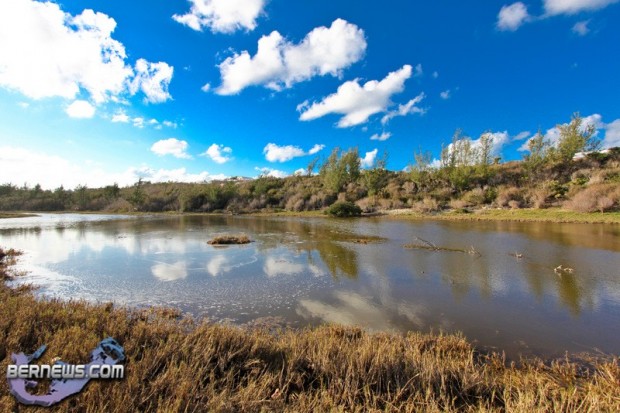
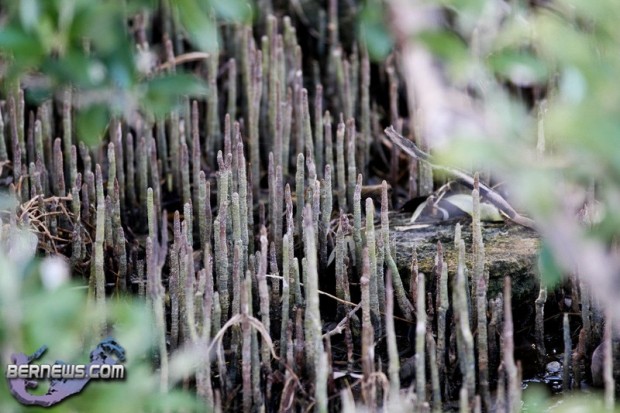
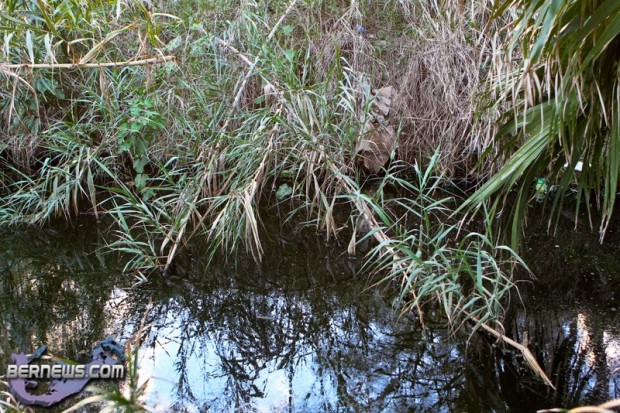
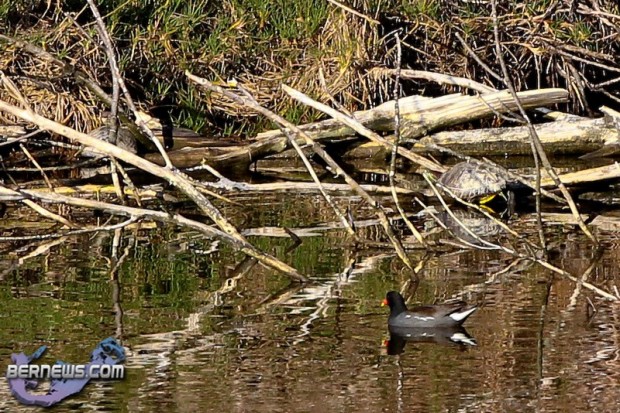

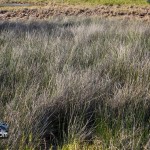


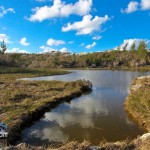
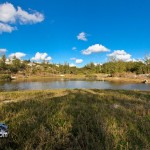
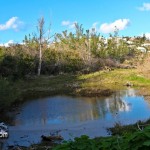
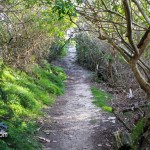
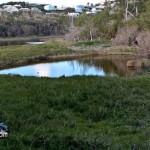

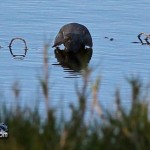
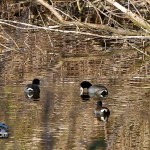
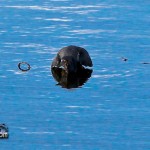
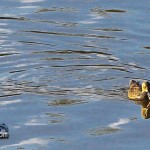
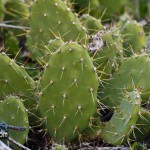
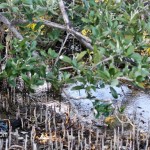
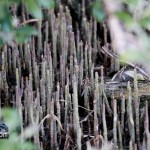
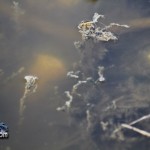
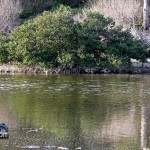
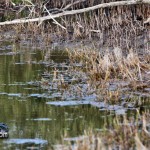
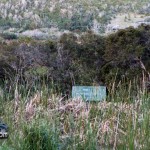
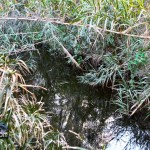
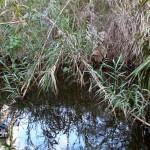
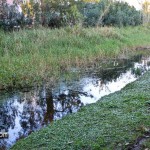
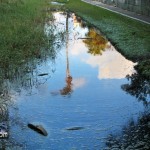
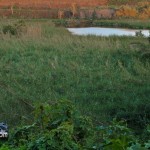
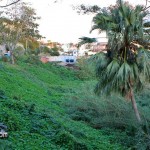

Damn…I did it again. Should be ashamed of myself.
Thanks Bernie for putting that up and thanks to Minister Burgess for getting his feet wet.
Fifty years ago, the Paget Marsh was a lush and green area and was enjoyed by many parish residents. The most inclusive were children.
Opposite the Paget Post Office in that little house lived the Repose’s. Forget his first name but I spent much time there and in the marsh/s.
He worked for Ag/fish back then. All residents would walk the marsh and enjoy his works of art. He planted hundreds of pots of differant varieties of flora and fauna and hung them amongst the sometimes wet and well traveled paths.
Even as a teenager it was easy not to destroy/damage these plants as they were such a beauty to behold. A lot of these plants were still there in the 70′s but not tendered too.
He had a secret path that led to an area of about 500 square feet that was nothing but Orchids in hanging baskets. He disguised entry and exit points. Only a few knew of this area. It was the most peaceful place in Paget with the exception of a few ‘croaks and ribbit ribbit’
Unfortunately, the swans took over and it’s nothing more than Marsh and Macllaanan
UBP. It’s all their fault.
Some beautiful photographs there. Growing up Hungry Bay & the mangrove swamp was my playground. Much has changed since them, mostly due to storm erosion.
Thanks for that reminder. Back in the 50-60′s, the area was well traversed by us young-uns. Spent many hours wandering through the area just observing and looking at the prolific aquatic life in those shallows.
And of course Gibbons Estate aka “Gibbons Gardens”.
Wouldn’t Devonshire Marsh look better if they stop filling it in? All that fill at the end of Marsh Lane and then other fill site off Parson’s Lane
Those businesses are encroaching hard and fast on that marsh. All that building going on behind Noah’s Ark. It is amazing to me in these hard times and slow economy that so much building continues. You would have thought that the land would be somewhat safe considering the gluttony of housing and office space, etc. But, as we are seeing, the building for the sake of building continues.
“We do not inherit the Earth from our Ancestors, we borrow it from our Children.”
It is too bad we never learn from our past as our ancestors did all the hard work for us and now we act like we don’t know. Sad.